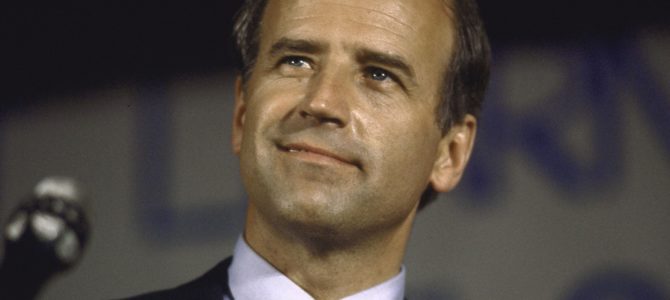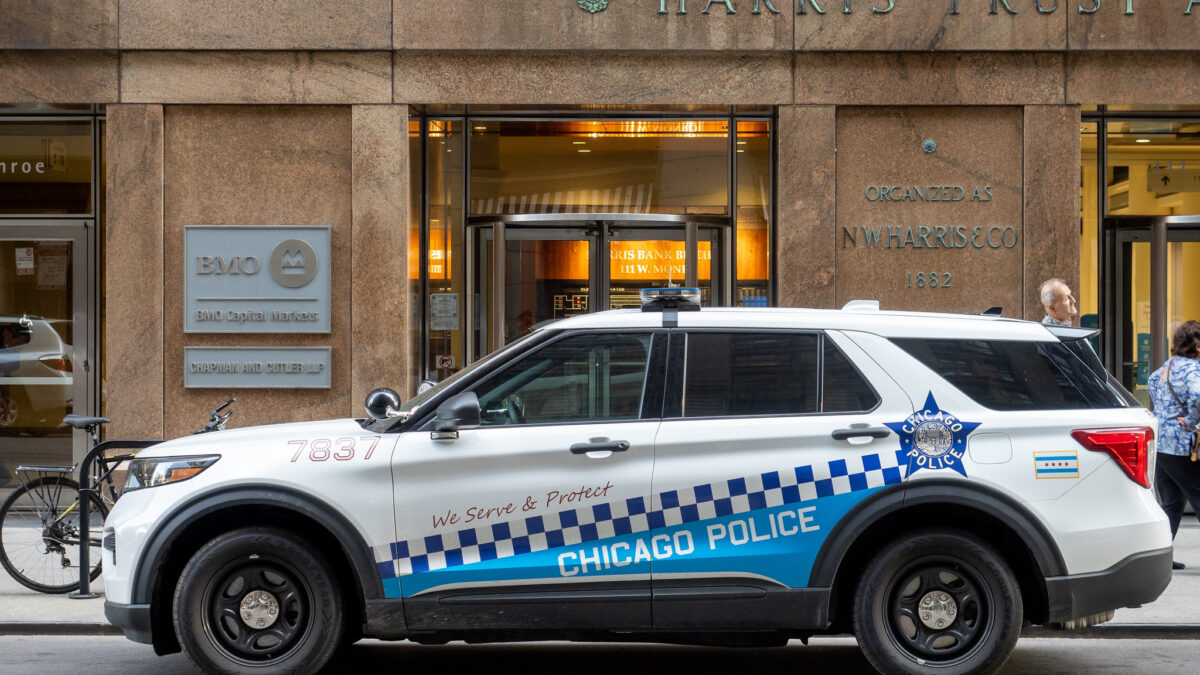
There are similarities in the sexual assault allegations made by Christine Blasey Ford and Tara Reade. Ford accuses Justice Brett Kavanaugh of pinning her to a bed, groping her over her clothes, and covering her mouth at a high school party in the early 1980s. Reade accuses Biden of forcibly penetrating her with his fingers when she worked for his Senate office in 1993.
The allegations are both decades old. Both are denied by the accused men. That does not render them false. It does, however, offer an instructive case study in media bias.
Reade’s allegation is against a Democrat, Ford’s is against a Republican-appointed justice. Reade supported Sen. Bernie Sanders’ bid for the Democratic presidential nomination, and came forward as the contest narrowed to Sanders and Biden. Ford is a registered Democrat, who made her allegation public after Kavanaugh was nominated to the Supreme Court. Both say they hesitated to step forward earlier for fear of retaliation.
Reade’s story went untouched by The New York Times, the Washington Post, and most of the legacy media for 19 days. The Post reported Ford’s allegation shortly after she agreed to go on the record, which took months and came after other outlets were closing in on the story.
A Study in Contrasts
When The New York Times finally published an investigation into Reade’s account, it was in the form of a meta-story headlined: “Examining Tara Reade’s Sexual Assault Allegation Against Joe Biden.” The Times’ original Ford story was straight news, headlined, “Kavanaugh’s Nomination in Turmoil as Accuser Says He Assaulted Her Decades Ago.” The paper’s story on absurd gang rape allegations made by Julie Swetnick against Kavanaugh was headlined, “Julie Swetnick Is Third Woman to Accuse Brett Kavanaugh of Sexual Misconduct.”
The Times story on Reade is appropriately rigorous, but tellingly involves a higher standard of skepticism than the one applied to Ford. The headline is Example One, framing the story as an examination rather than a report.
By the story’s third paragraph, the Times noted, “In interviews, several people who worked in the Senate office with Ms. Reade said they did not recall any talk of such an incident or similar behavior by Mr. Biden toward her or any women. Two office interns who worked directly with Ms. Reade said they were unaware of the allegation or any treatment that troubled her.” Oddly enough, the next sentence mentioned, “Last year, Ms. Reade and seven other women came forward to accuse Mr. Biden of kissing, hugging or touching them in ways that made them feel uncomfortable,” despite reporting no pattern of “similar” behavior by Biden.
Later, the Times added, “No other allegation about sexual assault surfaced in the course of reporting, nor did any former Biden staff members corroborate any details of Ms. Reade’s allegation. The Times found no pattern of sexual misconduct by Mr. Biden.” That, of course, depends on how “misconduct” is defined. The word would seem to include unwanted “kissing, hugging or touching.”
The Times was less insistent on Kavanaugh’s character testimonies. The original Times story on Ford included brief mention of a letter from 65 female classmates of Kavanaugh testifying to his character, along with a quote from the justice’s good friend, Mark Judge, whom Ford counted as a witness, denying her account and defending Kavanaugh. (The paper’s story on Swetnick’s allegation was better, although it probably should never have been published.)
The Times contextualized Ford’s allegation by placing it within the framework of a Democratic narrative about “Kavanaugh’s truthfulness,” writing, “Ms. Ford’s account comes as Democrats are already raising questions about Judge Kavanaugh’s truthfulness during his confirmation hearings this month. They have accused him of dissembling on a range of issues from his time in the George W. Bush White House, including a breach of secret Democratic files on judicial nominations and discussions about detainee policy and torture.”
But, again, the paper dubiously emphasized that Biden allegedly has no “pattern of sexual misconduct.” Why frame Kavanaugh’s denial with news that Democrats are raising concerns about his honesty and not frame Biden’s denial in the context of the allegations of inappropriate touching? Those allegations are mentioned twice in the story, and briefly. The Washington Post’s story on Reade went into much greater detail on them.
This is how media bias works. Sometimes it’s outright, but often it’s done more subtly through framing. While I would hardly call this contrast subtle, it’s certainly true the Times emphasized different elements of the story to frame Reade’s allegation more skeptically, starting right away with the headline. It’s about what you include and what you leave out.
NYT vs. NYT
This was so noticeable, even the Times had questions for the Times. Unfortunately it didn’t have great answers.
In an interview published Monday night, media columnist Ben Smith pushed Executive Editor Dean Baquet to explain the differences in coverage from Ford to Reade, particularly why the paper had an article on the Swetnick allegations up the same day she made them, but waited 19 days to report on Reade.
“Kavanaugh was in a very different situation. It was a live, ongoing story that had become the biggest political story in the country. It was just a different news judgment moment,” Baquet claimed. How Reade’s allegation did not qualify as a “live, ongoing story” is difficult to imagine.
Earlier in the interview, Baquet said the paper took more time to write about Reade’s allegation as breaking news because “Kavanaugh was already in a public forum in a large way,” other outlets had covered it and he felt the Times should bring “the expertise we had developed over doing more than a dozen of these kinds of stories” in its coverage.
But in Ford and Swetnick’s cases, other outlets covered their allegations before the Times, and the paper waited much less than 19 days to do the same. The “public forum” excuse is also silly because it’s the media’s job to bring information into the “public forum” when it can be reported out.
Baquet insisted the Times applied the same standard to both women’s stories. “The standard, to be really simple, is that we try to give the reader the best information we can come up with at the time. And we try to give the reader the information they need to make their own judgments,” he said. “Unless we can make the judgment. And Kavanaugh was a running, hot story. I don’t think it’s that the ethical standards were different. I think the news judgments had to be made from a different perspective in a running hot story.”
This explanation is absurd and not based in fact. The Times published a breaking news story on E. Jean Carroll’s assault allegation against President Trump the same day it went public last June. Like Reade, Carroll also had two friends who confirmed she told them about the incident after it allegedly occurred in the mid-1990s. The Times ran one and sat on the other.
Baquet further conceded the paper edited a perfectly fair sentence at the request of Biden’s campaign.
I want to ask about some edits that were made after publication, the deletion of the second half of the sentence: “The Times found no pattern of sexual misconduct by Mr. Biden, beyond the hugs, kisses and touching that women previously said made them uncomfortable.” Why did you do that?
Even though a lot of us, including me, had looked at it before the story went into the paper, I think that the campaign thought that the phrasing was awkward and made it look like there were other instances in which he had been accused of sexual misconduct. And that’s not what the sentence was intended to say.
And why not explain that?
We didn’t think it was a factual mistake. I thought it was an awkward phrasing issue that could be read different ways and that it wasn’t something factual we were correcting. So I didn’t think that was necessary.
None of these explanations add up. He was flailing. But Baquet’s strangest answer came when Smith asked, “Do you think that, in your heart, you’re reluctant to promote a story that would hurt Joe Biden and get Donald Trump re-elected?” A good answer would be, “Of course not!” Baquet went with, “I can’t make that calculation.”
“I won’t,” he added. “I won’t let my head or my heart go there. I think once you start making those kinds of calculations, you are not a journalist anymore. You’re some sort of political actor.” But the point is that it shouldn’t be a calculation at all.
Reade and Ford
It should be noted that Reade’s allegation went public in the midst of a pandemic. Most media coverage is rightfully focused on the Wuhan coronavirus.
There are some issues with her story as well. Three aides to whom Reade claims she complained about harassment from Biden deny it. She stepped forward last year and accused Biden of inappropriate touching, but did not say anything about the alleged assault.
One friend has corroborated to the Times and Post that Reade told her about the assault after it allegedly took place in 1993. Another told the Times Reade said in 2008 she had a “traumatic experience” while working for Biden’s office in the ’90s. Reade’s brother first said his sister told him Biden touched her neck and shoulders inappropriately in 1993, but texted a journalist several days later to say he remembered being told Biden put his hand “under her clothes.”
That’s still more than Ford. When she stepped forward in 2018, she had not told anyone until 2012, when the story came up during couple’s therapy with her husband. Ford said Judge, a friend of Kavanaugh’s, jumped on top of them during the alleged assault. Judge categorically denied that, as did two other people Ford claimed were present at the party, including her close friend at the time, Leland Keyser.
Biden is obviously in a position of equal or greater consequence than Kavanaugh was at the time of his nomination. But the corporate media, Hollywood, and Democratic establishment amplified Ford’s allegations immediately. Some openly accepted them.
Perhaps this story would be bigger if the allegations hadn’t come out in the midst of a pandemic, but the Times and Post still found space in their pages to cover Reade’s story—just with questionable framing and weeks after they went public. That stands in clear contrast to their treatment of Ford.
This is not “fake news” in that it’s true both these women say they were assaulted. But it’s unfair news, and that’s evident from the framing to the delayed timeline to Baquet’s messy attempt to explain away the discrepancies.
It’s also the kind of biased treatment conservatives receive regularly from the corporate media, which largely refuses to address the problem and instead insists its critics are dangerous fools. This juxtaposition is bad, but merely representative of a long and undying pattern.









